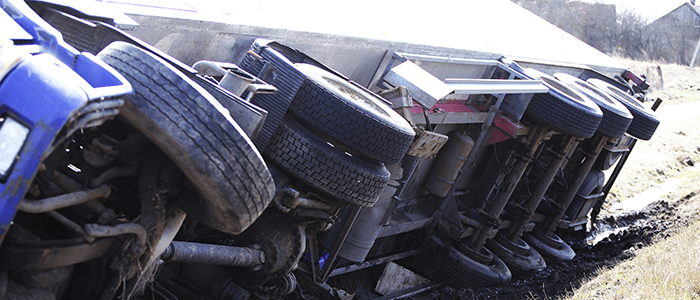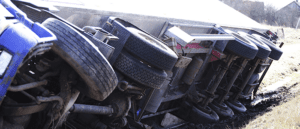Five common commercial vehicle accidents and tips on how to prevent them

When an accident happens, it’s often because someone made a mistake – in other words, most accidents are usually preventable. For a professional driver, even the smallest mistake can have a big impact on their driving career. Not to mention, the potential fallout from property damage or bodily harm that may stem from an incident on the road.
Knowing the risks and taking steps to prevent them is important in any industry. But, if you’re a commercial driver or fleet manager – an accident can seriously impact your ability to work. It can also impact your employees, business, and customers. That’s why understanding these common accident scenarios is important:
Here are five common accidents and prevention tips that can help mitigate the risk of an accident:
Backing accidents
Responsibility for backing safely is entirely on the driver. Backing can be dangerous if you neglect to make sure the way is clear during the entire movement. Backing should be avoided as much as possible.
Prevention tip: Surrounding hazards can be avoided if you familiarize yourself with an area first – both when you’re pulling into a property and when you’re leaving. Fleet yards can also be optimized to help prevent backing accidents by using reflective paint and warning signs to make hazards more visible.
Rear-end collisions
There are a number of situations where rear-end collisions may occur, whether it’s a driver colliding with the rear of the vehicle ahead of them or a driver backing into a vehicle behind them. These collisions can be the result of sudden stops at intersections, crosswalks, passenger stops, when preparing to turn or park, or when improperly parked or allowed to roll back before starting.
Prevention tip: Most rear-end collisions can be avoided by foresight in controlling speed and allowing sufficient following distance. Try anticipating the need to stop by watching the traffic situation ahead of the vehicle in front of you. Stop gradually — not suddenly. Also, take steps to make your vehicle is as visible as possible. Use extra conspicuity tape, lights and other reflective material to help make your truck easier to spot.
Intersection accidents
Stop lights, stop signs or right-of-way can help control the flow of traffic and indicate when it’s appropriate for a driver to go. But, this doesn’t mean a driver won’t “run a red” or roll through a stop sign.
Prevention tip: Intersection accidents can be addressed through defensive driving courses that promote tighter turns, proper mirror adjustments, and driving techniques to avoid a potential collision.
Parking accidents
Roll-away accidents from a parked position can happen in any vehicle but can be especially dangerous with larger commercial vehicles. These accidents can occur when a vehicle is unattended, when wheels aren’t properly blocked, or when the vehicles wheels aren’t turned towards the curb.
Prevention tip: Many fleet orientation programs are encouraging drivers to park several rows away from any active traffic lanes. Not only will this help cut down on preventable parking accidents, it also lends itself well to driver fatigue management – a quieter location to get a restful sleep and a healthy walk to the truck stop itself.
Traffic lane encroachment accidents
These accidents can include collisions that result from passing, weaving, squeeze-plays, shut-outs or entering a line of moving traffic. Such accidents are caused by trespassing on the right of others to move in a straight line without interference.
Prevention tip: One simple solution to this type of risk is to ensure your mirrors are properly adjusted so you have a clearer view of surrounding traffic. Many fleet yards have mirror adjustment stations providing reference marks that enable drivers to easily and accurately adjust their mirrors. Collision avoidance systems that sound an alarm when a hazard enters a truck’s blind spot are also effective in helping to prevent these types of accidents.
Ensure you and your fleet are protected
Despite your best efforts to practice safe driving, there are some things that you simply can’t control. In the event of an unexpected accident or damage to your vehicle, insurance can help you react quickly and get you back on the road. Learn more about the tailored and comprehensive policies that we offer by visiting our commercial auto insurance page today!
This blog is provided for information only and is not a substitute for professional advice. We make no representations or warranties regarding the accuracy or completeness of the information and will not be responsible for any loss arising out of reliance on the information.







